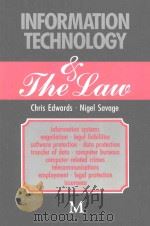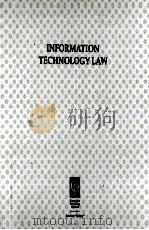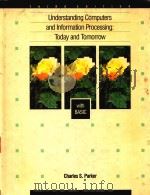《UNDERSTANDING INFORMATION TECHNOLOGY》
| 作者 | 编者 |
|---|---|
| 出版 | PRENTICE-HALL |
| 参考页数 | 493 |
| 出版时间 | 1986(求助前请核对) 目录预览 |
| ISBN号 | 0724812393 — 求助条款 |
| PDF编号 | 812922408(仅供预览,未存储实际文件) |
| 求助格式 | 扫描PDF(若分多册发行,每次仅能受理1册) |
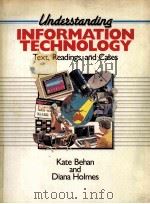
1The Need for Information1
Introduction2
Whatis Information Technology?2
The Desire to Communicate3
Information Technoiogyand Office Systems3
A Typical Business4
Drowningin Paper6
The Data Flow Among Organizational Functions7
Data and Information8
Why We Need Information8
Levels of Decision-Making9
Sources of Information12
Using Machines to Improve Information Resources14
A Preview of the Remaining Chapters18
Questions19
Readings: Technology Development20
Information Technology in Industry26
2Computers29
Introduction30
Basic Computer Concepts30
The Importance of Software32
Computer Personnel39
Ways of Using Computers39
Micros to Maxis—What's in a Name?46
Information Systems47
Documenting Systems49
Questions50
Readings: How a Microcomputer Works54
Number Systems55
What Have We Here?56
Technology Trends in the Information Processing Industry58
Software Shootout62
Careers in Computing66
3Selected Output Methods71
Introduction72
Output Options72
Printed Matter as an Information Resource73
Printed-Matter Problems75
Hard Copy or Soft Copy?76
Types of Printers76
Overlapping Printing and Processing78
Distributed Printing78
Terminals79
Graphics79
Computer Typesetting81
Audio Response Units82
Questions83
Readings: Output Design and Management84
The Facts About Printer Systems86
Computer Graphics for Management Decision-Making92
4Selected Input Methods99
Introduction100
The Input Function100
Input Methods101
Input Systemsin Use103
User-Friendly Design113
Questions114
Readings: Design of Data Entry Screens117
Causes of Erroneous Data Input120
What the World is Waiting For122
5Selected Storage Methods127
Introduction128
Magnetic Tapes128
Magnetic Disks129
Streaming Tape131
Micrographics131
Videodisks and Optical Disks134
Questions135
Readings: Kodak Integrates Technologies136
The Hard Word on Disks138
6Data Management141
Introduction142
The Data Resource142
Handling Large Volumes of Data142
Retrieval of Data144
Updating Data146
Stored Data Problems146
Organizing Data in Computer Files147
Retrieving Records from Computer Files148
Master Files and Transaction Files149
Some Other Types of Files150
What Is a Data Base?150
Readings: Computers Against Organized Crime152
A Data Base of Patrol Vehicles154
Changing the Contents of Computer Files155
Protecting Computer Files155
Query Systems157
Nonprocedural or Fourth-Generation Programming Languages157
Readings: Using FOCUS158
Using SQL162
INTELLECT—A Natural English Query System162
UsingSAS164
Use of Fourth-Generation Languages165
Questions168
Readings: Creating and Using a Data Base169
Computers That Think Like Experts174
7Programming Computers185
Introduction186
Language Development186
What Is Programming?187
Aids for Developing Programs190
Keeping Logic Simple194
Pseudocode196
Flowcharting198
Programming Languages199
Using BASIC200
Using PICK BASIC206
Using COBOL207
Questions217
Readings: Computer Speak221
INFO/BASIC Syntax226
8Using Communications Systems231
Introduction232
Communications Networks232
Communications Products242
Telephones244
Readings: Faster Firefighters247
Illinois Toll Authority Communications System249
Interlaser250
Transmitting Images by Telephone250
Electronic Mail250
Electronic Filing System252
Teleconferencing252
Bulletin Boards253
Public Data Bases254
Videotex Systems254
Electronic Funds Transfer Systems (EFTS)258
Home Banking259
Miniature Inquiry Terminal259
Facsimile Communication259
Questions261
Readings: Why Fibre Optics are Taking Over263
A Perspective on Communications and Computing264
Personal Computer Networks Go On-Line267
Videotex—The Beginning273
9Converting from a Manual System to a Computer System279
Introduction280
Manual Systems in the Case Company280
Business Growth and Stagnation282
Problem Specification284
Computer System Selection288
Evaluating Appropriate Software289
Evaluating Appropriate Hardware291
Feasibility Review292
Evaluating Vendors295
Questions296
Readings: Micros Come Out of the Closet297
Micro-Mini Links Building Strategy301
Questions for Readings303
10Implementation and Operation Using Packages305
Introduction306
Implementation at the Case Company306
Sample Accounts Receivable System309
Customer Master Details311
Creating the Master File314
Operations at the Case Company316
Transaction Entry: An Overview316
Producing Reports321
Month-End Processing322
Questions323
Readings: Contingency Planning: A Discussion of Strategies325
Installing Manufacturing System Software Package329
Questions for Readings331
11Developing Information Systems—Methods and Aids333
Introduction334
Systems Development Activities334
Systems Life Cycle336
Applications Backlog337
Micros and the Applications Backlog337
Productivity Aids and the Applications Backlog340
Prototyping343
Using Office Automation Systems345
Information Centers349
Questions353
Readings: Managing Systems Development: A User's Guide353
What Is Best for the User? Packages vs In-House Programs360
MANTIS: A User Report364
Justifying Office Automation366
CAUTION: User Developed Systems Can Be Dangerous to Your Organization371
Questions for Readings380
12How Growth and Diversity Affect Information Systems381
Introduction382
Implications of Growth and Diversity382
Decision-Makingin Larger Organizations383
Complexity in Larger Organizations383
What Information Do We Need?389
Other Information Needs and Sources390
When Do We Need Information?391
The Need for Decision Support Systems394
Functions Needed for Decision Support Systems398
Managing Information Technology399
Questions402
Readings: The On-Line Revolution at the Nestle Co.404
Financial Modeling Within Distributed Systems406
Applications Systems Planning at Weyerhaeuser411
Questions for Readings419
13Information Technology and Society421
Introduction422
Employment422
Ergonomics425
Robotics425
Crime426
Privacy430
The Disabled434
Questions435
Readings: A Human Perspective436
Ergonomics: The Key to Efficiency in the Modern Office Environment438
What MIS Executives Need to Know About Robotics440
The Protection of Intellectual Property444
Enhancing the Receptive and Expressive Abilities of Physically Handicapped People446
Questions for Readings451
14Practical Cases453
Introduction454
Olympic Games454
Avid Aths455
The Jolly Soak456
DK Corporation458
Charlotte's Cleaning Company459
General Airlines Limited460
Eastern College of Higher Learning462
True Traders464
Australian Red Cross Society473
Name Index481
Organization Index482
Product Index483
Acronym Index485
Subject Index486
1986《UNDERSTANDING INFORMATION TECHNOLOGY》由于是年代较久的资料都绝版了,几乎不可能购买到实物。如果大家为了学习确实需要,可向博主求助其电子版PDF文件(由 1986 PRENTICE-HALL 出版的版本) 。对合法合规的求助,我会当即受理并将下载地址发送给你。
高度相关资料
-
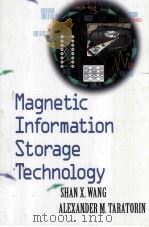
- Magnetic Information Storage Technology
- 1999 Academic Press
-
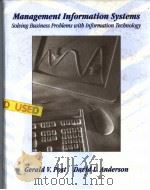
- MANAGEMENT INFORMATION SYSTEMS:SOLVING BUSINESS PROBLEMS WITH INFORMATION TECHNOLOGY
- 1997年 IRWIN BOOK TEAM
-
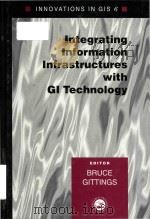
- Integrating information infrastructures with geographical information technology
- 1998 Taylor & Francis
-
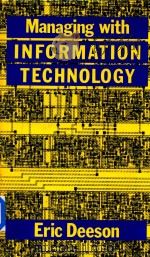
- Management with Information Technology
- 1987 Kogan Page
-
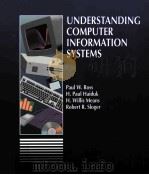
- UNDERSTANDING COMPUTER INFORMATION SYSTEMS
- 1992 WEST PUBLISHING COMPANY
-
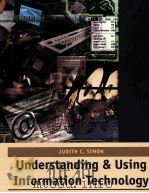
- UNDERSTANDING AND USING INFORMATION TECHNOLOGY
- 1996 WEST PUBLISHING COMPANY
-
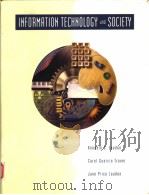
- INFORMATION TECHNOLOGY AND SOCIETY
- 1994 WADSWORTH PUBLISHING COMPANY
-
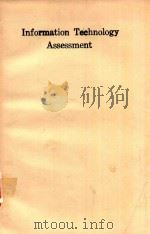
- INFORMATION TECHNOLOGY ASSESSMENT
- 1991 NORTH-HOLLAND AMSTERDAM NEW YORK OXFORD TOKYO
-
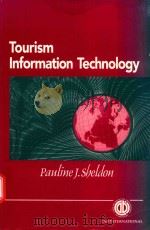
- TOURISM INFORMATION TECHNOLOGY
- 1997 CAB INTERNATIONAL
-
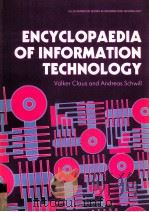
- ENCYCLOPAEDIA OF INFORMATION TECHNOLOGY
- 1992 ELLIS HORWOOD
-
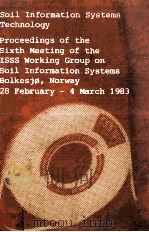
- SOIL INFORMATION SYSTEMS TECHNOLOGY
- 1984 PUDOC WAGENINGEN
提示:百度云已更名为百度网盘(百度盘),天翼云盘、微盘下载地址……暂未提供。➥ PDF文字可复制化或转WORD

